Megafires Fueled by Banks and Investors
Threaten to Destroy the Amazon
Will Frechette / Eko

Deforesting the Amazon for short-term profit.
(March 28, 2024) — The Amazon is speeding toward a point of no return — scientists say if 20% of the forest is lost, it will set off a domino effect that will cause the whole ecosystem to collapse.
Local communities are crying out for help. 18% of the forest is now gone, and megafires are burning through hundreds of square miles of untouched rainforest. Years of punishing drought and scorching heatwaves have pushed the Amazon into crisis.
Yet the worst offenders behind the destruction of the Amazon – a rotten, predatory financial industry that’s poured an astounding $6 trillion into companies responsible for deforestation in the last few years alone – are flying completely under the radar. Their profits are even soaring!
We’re going to change that. We have a crack team ready to hit the ground running to expose the big banks responsible for this emergency, and ramp up our campaigns in the media and with shareholders to force them to change. We’ll shine the spotlight on them like never before — and push to make this year a turning point for the planet. Can you chip in to stop banks destroying the Amazon?
“We’ve never seen anything like this.” Scientists are losing it, saying the rainforest “has never been closer” to collapse. Rain should be drenching large swaths of the Amazon by now. Instead the rainforest is engulfed in flames.
JPMorgan Chase, Citi, and Bank of America are carrying on with business as usual, pumping trillions into oil and gas projects and companies that are deforesting the Amazon. The companies they shower with loans, investments, and insurance are responsible for over 70% of all greenhouse gas emissions and destruction of tropical forests.
If banks just stopped funding these destructive projects, it could literally reset our global economy – and the fight against climate change. But right now, the financial incentives are all wrong. We need to change the calculation by making these banks as famous for fuelling climate chaos as they are for plastering their names all over sports stadiums.
Here’s how we’ll do it:
- Make the CEOs famous for their role in climate destruction, hounding them at public appearances and splashing their faces on billboards and in the media;
- Pass new regulations to close loopholes and make fossil fuel projects too expensive and too difficult to bankroll;
- Organise employees of targeted banks and insurers to oppose their companies’ policies from the inside;
- File shareholder resolutions around the world to change the rules for investing in favour of the planet.
These companies are the root of the climate crisis that’s causing the Amazon burn – and countless other tragedies. If we’re going to save the planet, we’ll have to change the way they do business.
Together we convinced insurance giant AIG to stop underwriting a disastrous, climate-wrecking coal mine near the Great Barrier Reef. With your help now, we can take on the financial industry and win again.
Thanks for all that you do,
Will, Yasmin, Danny and the Ekō team
Megafires Are Spreading in the Amazon
— and They Are Here to Stay
Sibélia Zanon and Luis Patriani / Mongabay
(February 22, 2024) — “When I see the rainforest burning, I know what I’m really seeing is Amazonia dying. I see that fire and, as a scientist, I know how much that hectare will lose in terms of individual lives, how much carbon will be emitted and how much the process accelerates climate changes,” states Erika Berenguer, a Brazilian researcher at the University of Oxford. “At the same time, I lose a part of myself — my identity as a human being, as a scientist, is very tied into it. It’s in the soil, in the rainforest, walking in the forest every day.”
In October of 2023, Berenguer began seeing large forest fires in the region near the city of Santarém in western Pará state. It was a repeat of the scenario she witnessed in 2015 when the region suffered similar burns.
According to her calculations in 2015, 2.5 billion trees died and the volume of carbon dioxide released into the atmosphere was greater than the emissions from entire nations including France and the United Kingdom. “I’m seeing everything happen all over again,” states Berenguer, who had been diagnosed with pneumonia brought on by smoke inhalation. “And I’m looking into the future and thinking that this will happen more and more often. That megafires are not the exception. They will become the rule.”
Technically defined as an enormous fire burning more than 100 square kilometers (38 square miles) of forest that occurs at the same time, in the same region and under the same climatic conditions, a megafire doesn’t necessarily need to be continuous. There may be multiple fire outbreaks. And it so happens that, at least in theory, they shouldn’t be happening in the humid tropical rainforest.
In a biome characterized by its intense humidity and trees that grow more than 50 meters (164 feet) in height, fire does not occur spontaneously. Usually accidental, forest fires in Amazonia are caused by uncontrolled small fires such as crop burning, livestock management (to clear pasture) or clear-cutting — this, which is almost always illegal, resulting from razing trees for new pastureland, monoculture farming or real estate speculation. What is certain is that all types of fire in the Amazon Rainforest are anthropic, meaning humans caused them.
According to Lancaster University researcher Jos Barlow, there is more than one type of forest fire. “There are wildfires when a forest burns for the first time: Usually it is low-burning, spreads slowly and can even be difficult to detect via satellite.
Yet it still has a great impact on the forest and kills many species adapted to that dark understory,” explains Barlow, who has been working in Amazonia for two decades. “And there are fires [that start] when the forest has already been degraded by selective logging or a previous fire. These more degraded forests burn more intensely and the fire spreads faster.”
The issue is that fires in Amazonia are unlike those in other biomes. In the Brazilian Cerrado, for example, the trees have thick bark and are more resistant. Many species manage to resprout after a fire. But Amazonian trees are covered in thinner bark that offers no resistance to fire. Forest fires leave scars in Amazonia. But what happens when the marks left in the rainforest are overproportional?
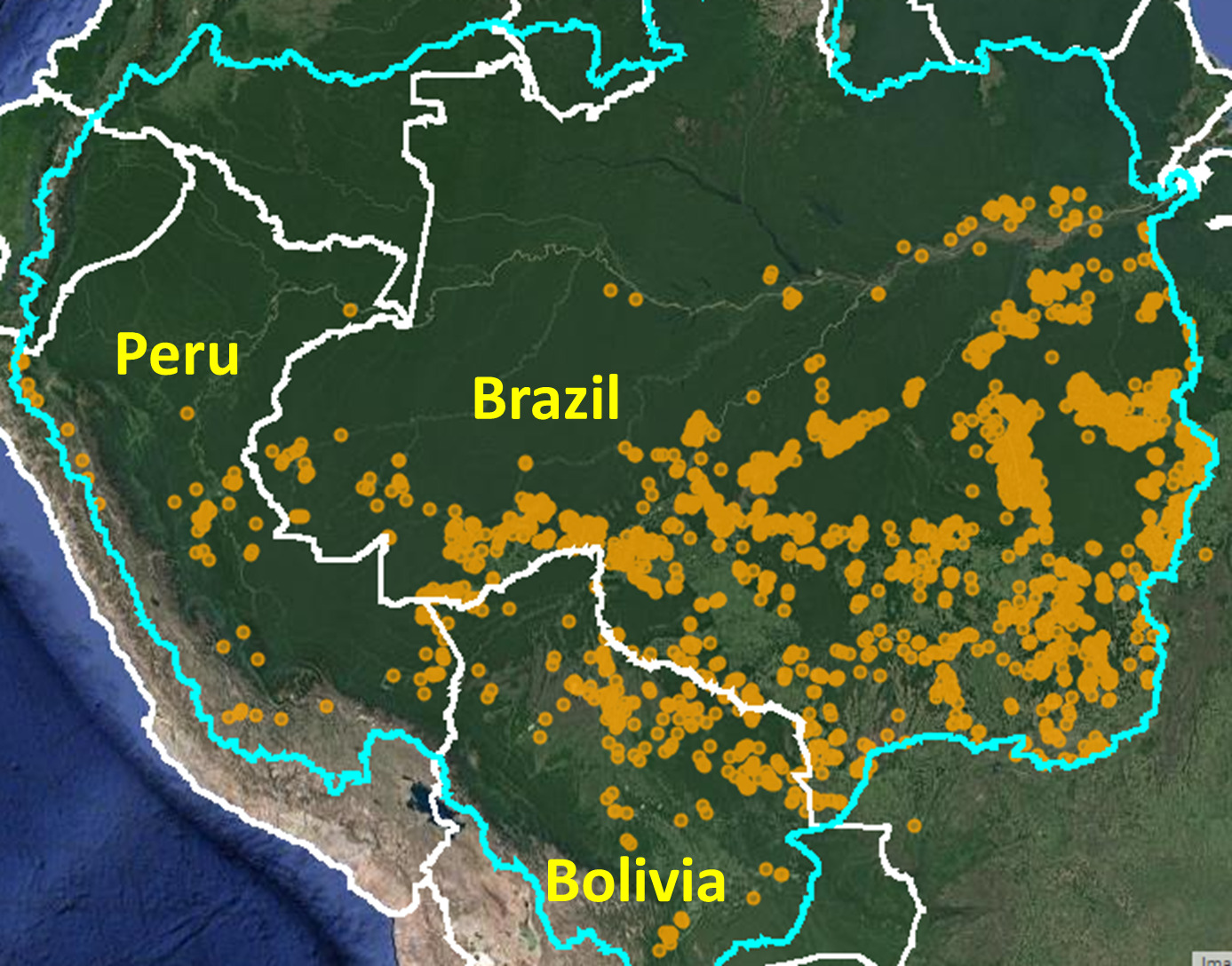
Megafires in the Brazilian Amazon
Satellite imagery gathered by MapBiomas (1998, 2005 and 2015) and the NASA Goddard Space Flight Center Biospheric Sciences Lab (2023) show the scope of megafires in different states in the Brazilian Amazon over the last 25 years and the conservation units most affected by the fires:
- 1998, Roraima state, 1,765 km2 (681 mi2), Roraima National Forest, Maracá Ecological Station and the Yanomami Indigenous Territory;
- 2005, Acre state, 427 km2 (165 mi2), Chico Mendes Extractive Reserve;
- 2015, Maranhão state, 2,200 km2 (850 mi2), Arariboia Indigenous Territory;
- 2015, Pará state, 9,820 km2 (3,790 mi2), Tapajós National Forest and Tapajós-Arapiuns Extractive Reserve;
- 2023, Pará state, 2,592 km2 (1,000 mi2), Flona Tapajós National Forest and Tapajós-Arapiuns Extractive Reserve.
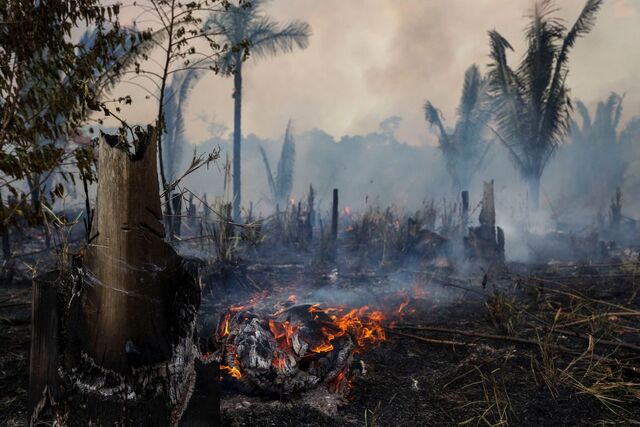
Fire at the Foot of the Andes
In December 2023, Douglas Morton, who runs NASA’s Goddard Space Flight Center’s Biospheric Sciences Lab, met with Ambiental Media’s geo-journalism team. During the meeting, he shared images from his computer screen detailing the multitude of fire outbreaks in the eastern part of Tapajós National Forest in the Santarém region. “It’s an enormous area. We’re talking about 2,000 km2 [772 mi2] that have been burning for a month and a half.”
Researchers from the Sustainable Amazonia Network [Rede Amazônia Sustentável] explain that the rainforest surrounding Santarém and along the Bolivian border with the Brazilian states of Acre and Rondônia are burning this year at such high proportions that it has been characterized as a megafire.
“There are megafires burning in all the forests near the foot of the Andes in Bolivia. Almost everything is on fire,” Barlow says. “To get an idea, there is one single fire covering 727 km2 [280 mi2]. This is just one fire, but it has run together with several other enormous fires.”
According to scientists, megafires are a result of an El Niño year paired with the driest period, causing the most severe drought seen in the last 40 years in Amazonia. The worsening effects of climate changes, rainforest degraded areas and low river and groundwater levels (like those seen in 2023) contributed to the spread of wildfires.
“When you have a drought year, both small farmers and large landowners lose control of fires,” says Liana Anderson, a researcher at the National Center for Natural Disaster Monitoring and Early Warning [Centro Nacional de Monitoramento e Alertas de Desastres Naturais] (CEMADEN). “We see a larger percentage of forests burned within large properties. This shows we have vulnerability in rural areas.”
According to CEMADEN data, the scenario will remain worrisome into 2024. El Niño’s effects that favor fires — a lower tendency for rainfall and higher than average temperatures for the period — peaked in December 2023.
“It seems to me that this year is the most intense of all my years working in this national forest, more intense than 2015 and 2016, which were the other El Niño years,” states Marcos Oliveira, a firefighter with ICMBio, the environment ministry’s office overseeing protected areas who is currently combating the wildfires in the Tapajós National Forest. “We managed to control some burns, but in others we needed to call in brigades from outside to get the job done.”
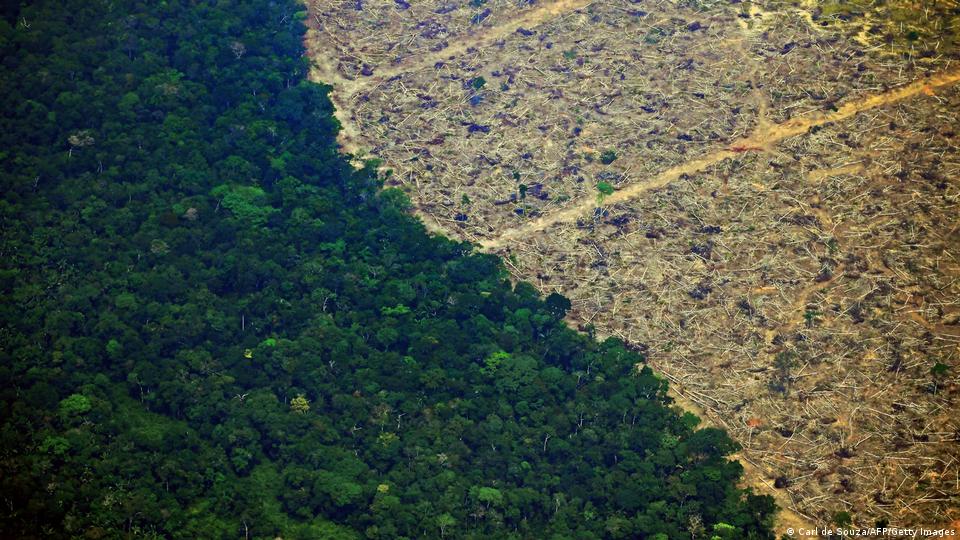
More than a Third of the Amazon Is Damaged
A cover article in Science magazine from the beginning of 2023 states that 38% of the Amazon Rainforest is degraded, meaning that it’s already showing gradual loss of vegetation and no longer provides the same environmental services as intact forest. This means that the Amazon is weakened and more vulnerable to recurring and extreme climate events, and also too dry to prevent fire from spreading.
In a well-preserved Amazonia, our feet make no sound as we walk through the forest, even during the dry season. Despite the dry weather, the litterfall — the layer of nonliving organic debris that accumulates on the forest floor — remains moist. Such is not the case in a forest that has burned. “When you walk, you can hear the leaves: crunch, crunch, crunch,” describes Barlow. “It’s impressive; a totally different experience. It’s much drier, and the leaves and branches from trees that have already died make up a layer of fuel for fires.”
The first wildfire that passes through an area of the rainforest in Amazonia can kill nearly half of the trees. For many subsequent years, the largest trees continue to die because the fire has weakened them and they are more vulnerable to disease, fungi and termites. When they fall, they kill adjacent young trees in a sort of domino effect. So, one of the results, or scars, left on the forest is that it becomes more open, like Swiss cheese, in Berenguer’s words.
When observing the parts of the forest that burned just eight years ago during the 2015 El Niño, Berenguer says, the landscape is different, with more so-called pioneer trees, which are the first to appear in degraded areas. “These are the trees that grow even in vacant lots; they’ll grow anywhere. One is a very common genus, the embaúbas, which in the Tupi language means ‘hollow tree.’”
She also comments that she has noticed a difference in the megafire burning today: It is burning vertically. “In these areas with many embaúbas — the areas that burned in the last El Niño [2015] — we are seeing flames that at times reach 10 m (32 ft) in height. Apparently, the fire is traveling more rapidly and is larger than we had seen before, causing the deaths of even more individuals.”
It so happens that the fires have not been occurring exclusively in previously burned areas nor in areas directly related to clear-cutting. Researchers are concerned that right now, any fire at all could quickly get out of control because the entire landscape is flammable.
“It’s important to point out that, in a year like 2023, we are seeing more forest fires in areas where there has been less deforestation,” says Morton. “This is because fire is being widely used for other purposes.”
A study carried out in Acre shows that climate extremes previously felt in the region at 50-year intervals are now felt every year. And many different events are happening every year. “We are having a collapse caused by many concurrent events, each of which is greatly damaging,” says Sonaira Silva, researcher at Acre Federal University.
Just like this year, the 2015 Pará megafire burned not only in areas that had undergone previous disturbances, but also in areas of intact rainforest. Berenguer says that 2015 was a window on a future reality, pointing out that fire knows no boundaries.
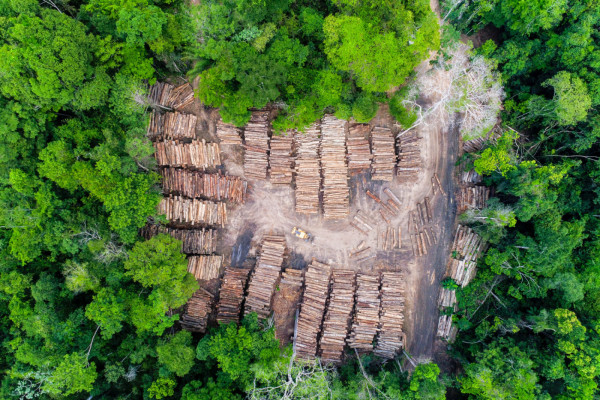
Keeping Forests from Burning
Specialists trust the fire watch data generated in Brazil. Aside from government data, some private and third-sector organizations are also working to observe the situation. “The geotechnical work being done at institutions that are developing monitoring systems is quite commendable,” states Anderson.
The more specific the data, the better they are for creating prevention policies. Anderson mentions the Amazonia Fire Calendar, containing data on the time of year in which each region in the Amazon becomes more vulnerable to fire. “This type of information is very important for policy planning and decision-making,” she says.
However, preventing fires continues to be a challenge because most of the funding is allocated to fighting already existing fires. Specialists say employees should be hired to exclusively monitor satellite imagery so that reaction times can be reduced when a fire breaks out. “Firefighting is part of it, but it’s not the solution in and of itself. It’s a bandage that falls off the first time anyone starts to sweat,” says Barlow. “We must find ways to keep the forests from catching fire in the first place.”
An even more effective prevention tool would be the sort of work done by Joaquim Parimé, head of the IBAMA Environmental Emergency and Forest Fire Nucleus in Roraima. Since 2015, Parimé has been developing work with Indigenous communities that focuses on integrated fire management, prescribed burning, controlled burning and creating firebreaks in strategic microsystems. And wildfires have ceased in the locations where the project was put in place.
“The results have been very encouraging in the regions belonging to Indigenous people. These populations have revived ancestral uses of fire to manage their landscapes. They use fire to maintain the ecosystem, they use fire as a tool to preserve. They use good fire, benevolent fire, fire that protects.”
Joice Ferreira is a researcher at Embrapa Eastern Amazon and the co-author of a document delivered to the Ministry of the Environment and Climate Change that aims to improve the policies included in the Plan of Action for Deforestation Prevention and Control in the Legal Amazon (PPCDAm). She also suggests that an emergency fund to prevent and fight fires in extremely dry years should be created.
“The fund could provide funding in critical regions so they [family farmers] don’t plant their gardens. It would protect the area, a sort of food grant during a season when families weren’t allowed to plant crops,” the biologist suggests. “Once a fire spreads, it’s much more difficult to contain and creates enormous costs, both environmentally and socially.”
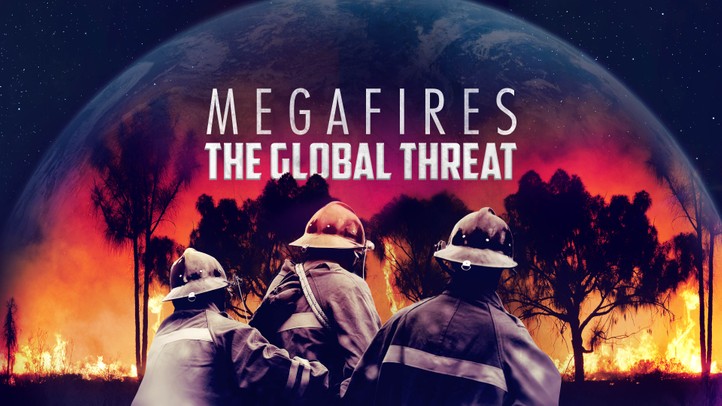
Megafires Are Hard to Fight
Aside from being voluminous, they spread through parts of the forest with limited access. Sometimes they are only really extinguished when the rainy season comes around again. “We are in the field all the time. Four days of rain is no help; a day later, everything is dry again and catching fire,” says Ralph Cohen, head of the ICMBio firefighting brigade in the Tapajós National Forest. “There are many Indigenous areas, many communities. We are working to protect these areas. And the fire this year was very intense. Very, very intense.”
Cohen says he fears losing the rainforest more than he fears fire. Snakes, sloths, coatis and tortoises are the animals he most finds in agony. “We find many, many animals. We find them trying to run away, dead, injured. It’s heartbreaking.”
This story was first published in Portuguese by Ambiental Media and produced in partnership with the Sustainable Amazon Network (RAS).
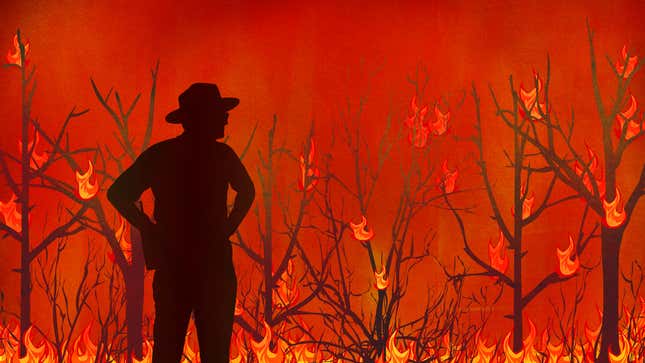
More Information:
Rains Are Scarce in the Amazon. Instead, Megafires Are Raging. The New York Times, 09 March 2024
Major companies and financial institutions are persistently ignoring their role in driving deforestation. Forest500 Org, 27 February 2024
New research shows eight major banks responsible for majority of US$ 20 billion in financing for oil and gas companies destroying the Amazon. Banktrack, 25 July 2023